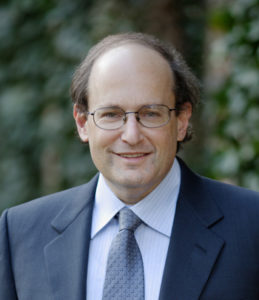Paul J. Steinhardt
Paul J. Steinhardt is the Albert Einstein Professor in Science at Princeton University, where he is on the faculty of both the departments of Physics and of Astrophysical Sciences. He co-founded the Princeton Center for Theoretical Science and served as its Director from 2007 to 2019.
Steinhardt’s research spans problems in particle physics, astrophysics, cosmology, condensed matter physics and geoscience. He is well known as one of the original architects of the inflationary model of the universe, and was one of the first to show that inflation leads to a multiverse. Concerned that the multiverse effect destroys the predictability of inflation, he later co-developed the “cyclic model” of the universe, which is now considered a leading rival. Advances are currently being pursued by the Simons Foundation program on Cosmological Bounces and Bouncing Cosmologies, which he co-founded. Steinhardt is also known for his work on dark energy and dark matter, including introducing theories of “quintessence” dark energy and self-interacting dark matter (SIDM).
In 1983, Steinhardt introduced the theoretical concept of quasicrystals with his student Dov Levine, and has subsequently worked to illuminate many of their unique physical and mathematical properties. In 2009, Steinhardt organized a team that discovered the first natural quasicrystal in a museum sample in Florence, and then established its origin by leading an expanded team on a geological expedition to the Kamchatka Peninsula in 2011. He is also co-discoverer of quasicrystals formed during the first test explosion of an atomic bomb (the Trinity Test at Alamogordo NM). He is also a co-inventor of the first three-dimensional icosahedral photonic quasicrystal, along with a new class of photonic materials called hyperuniform disordered solids (HUDS).
Steinhardt is a Fellow in the American Physical Society and the National Academy of Sciences and received the P.A.M. Dirac Medal from the ICPT in 2002. He is also the recipient of the 2010 Oliver E. Buckley Prize of the American Physical Society; the 2012 John Scott Award; and was named Caltech Distinguished Alumnus in 2014. In 2018, he and Italian geologist Luca Bindi shared the Aspen Italia Prize for their discovery of the first natural quasicrystals. In 2020, he was awarded the Niels Bohr Institute Medal of Honor for his contributions to science and the Carl Friedrich von Siemens Research Award from the Alexander von Humboldt Foundation. He is the author of a popular account of the discovery of natural quasicrystals — The Second Kind of Impossible: The Extraordinary Quest for a New Form of Matter (2019) and co-author of the popular book on cosmology — Endless Universe: Beyond the Big Bang (2007). He has a B.S. in Physics from Caltech, and an M.A. and Ph.D. in Physics from Harvard University.
[For more detailed bio, go here]
Prof. Paul J. Steinhardt
Albert Einstein Professor in Science
Department of Physics
Department of Astrophysical Sciences
Princeton University


